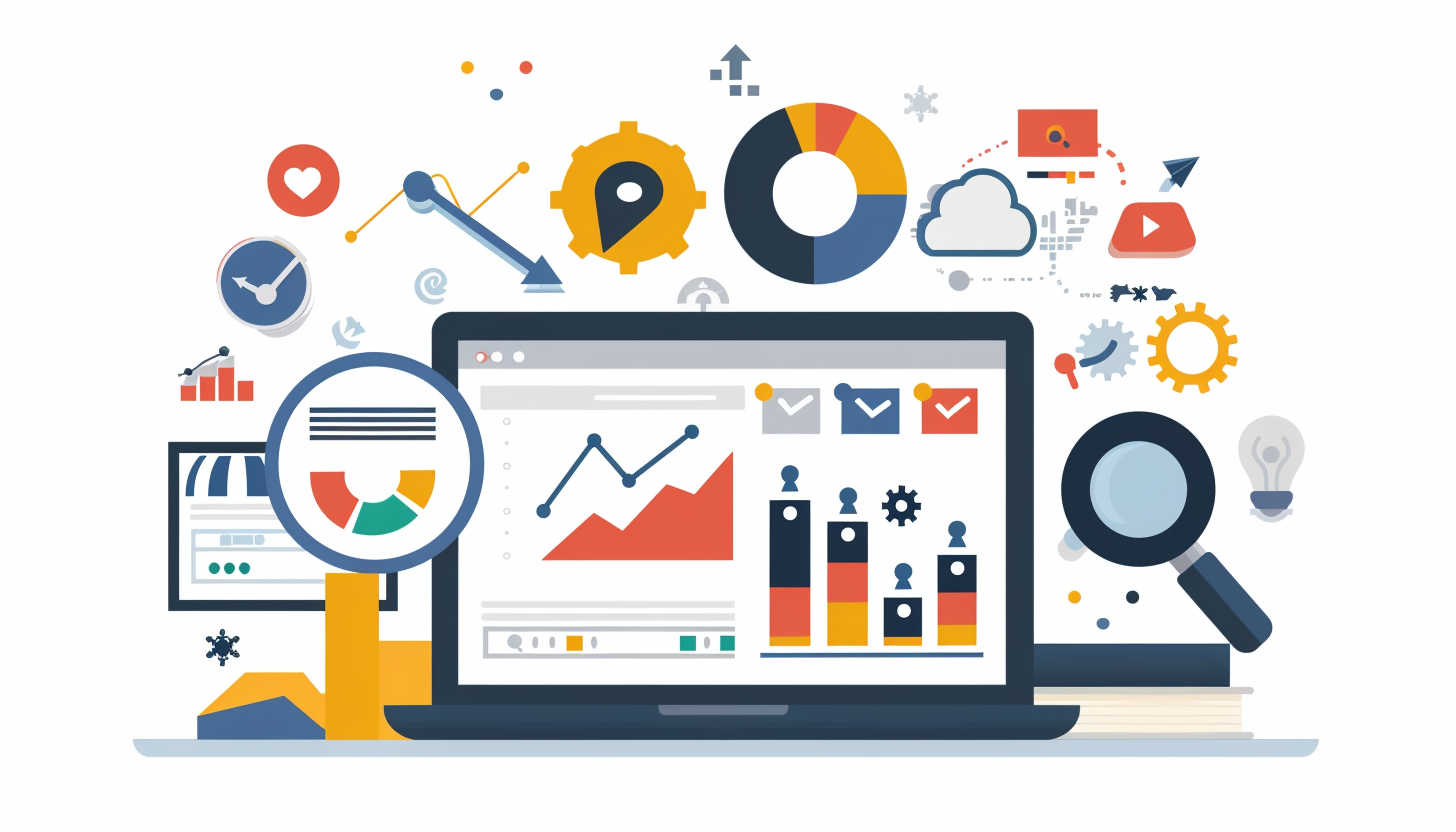Joseph R. Cashman is a digital marketing consultant with 20+ years of experience assisting nonprofits, startups, and established brands. As the founder of DigiM Consulting, he specializes in SEO, strategic content, and analytics-driven solutions. Joseph combines creativity with technical expertise to create user-focused websites and effective marketing strategies.
Essential Digital Strategies For B2B Growth
Did you know that 61% of B2B transactions start online, yet only 48% of B2B companies feel they are effectively leveraging digital marketing? (1) How can your business bridge this gap and optimize its digital presence?
Well, to start, a good old fact-finding, data-gathering, research plan. Having a strong understanding of your audience and marketplace is key to helping minimize the fickle, quickly dismissible manners so often exhibited by online searches.
Understanding Your B2B Marketing
B2B marketing (business-to-business marketing), involves selling products or services from one business to another. Unlike B2C (business-to-consumer) marketing, B2B focuses on the needs, interests, and challenges of individuals purchasing on their organization's behalf. B2B marketing is also distinct from B2C marketing in several ways.
Sales cycles are typically longer, the decision-making process is more complex, and relationships are built on trust and long-term value. Additionally, B2B transactions often involve higher stakes and more informed buyers.
B2B Digital Marketing Strategies

Your company's brand, reputation, and online reviews are beyond important and will require their own article so, for the sake of this article, we will concentrate on the efforts to show consistency with digital strategies, SEO, and content marketing.
Inbound marketing must work harmoniously; each plays a vital role in the overall performance of inbound marketing, so let's start with some basics.
- Technical and organic SEO (Search Engine Optimization) should guide content development and site construction. Organic research comes from extensive market/online investigations, helping you identify relevant terms and questions to address.
- Second, your site should be technically built to appease search engines. When you sprinkle relevant keywords, create high-quality backlinks, and ensure your site loads faster than a morning squirrel, you're signaling to search engines: "Hey, we're legit!" SEO ensures your content is discoverable.
- Content Marketing weaves blog posts, videos, e-books, and infographics—that resonate with your audience. Content isn't just about churning out words; it's about crafting narratives that educate, entertain, and empathize. When you create valuable content, you're building trust.
- Inbound Marketing is about attracting prospects organically. It's when the above come together and welcome inbound visitors, offering them more content, free resources, and expertise they can trust—not with a hard sell but with a heartfelt invitation to stay awhile.
Infographics and Visual Content
Visual content like infographics can simplify complex information and make it more digestible for your audience; they are also shareable on your preferred social channels, increasing your reach.
Although data research can be an up-front, time-consuming task, this endeavor allows your organization to stand out as a thought leader.
Video Marketing: Let them see your personality

Videos are possibly, if done right, even more effective in simplifying complicated services/technologies/products. The advent of HD cameras on our phones, along with the endless editing online options, can help craft modestly budgeted video projects that can (again, if done correctly) make the right impression on your targeted business, helping quickly understand why you're a worthwhile organization.
Some examples of simple but effective content are answer-based content (ideal for search queries, especially if none of your competitors have such video content available), product demonstrations, a simple, fun AD, and real customer testimonials.
What Is Account-Based Marketing (ABM)?
ABM is a strategic approach that focuses on high-value accounts within a market or business; instead of casting a wide net and targeting a broad audience, ABM hones in on specific companies or even individual decision-makers.
The value of account-based marketing is precision targeting. ABM allows you to laser-focus your efforts. Instead of spreading thinly across a large audience, you concentrate on the accounts that matter most. This precision increases the likelihood of success.
- Efficiency: No more wasted time on unqualified leads. ABM helps you weed out less valuable companies early on. You can allocate resources efficiently and avoid chasing after accounts that won't convert.
- Alignment: ABM bridges the gap between Marketing and Sales. The entire process becomes smoother when both teams work together on the same set of high-value accounts.
- Customer Loyalty: Personalized experiences build stronger relationships. When you tailor your interactions to each account's needs, you enhance customer loyalty and satisfaction.
- ROI: It's about quality over quantity. In fact, 76% of marketers say ABM generates a greater ROI than any other strategy. (2) So, it's not just a buzzword—it's a powerful approach that can transform how you engage with your most important clients.
Measuring Success
KPIs (Key Performance Indicators): Relevant metrics include website traffic, conversion rates, and lead quality. These indicators help in measuring the effectiveness of your marketing efforts.
Analytics Tools: Tools like Google Analytics and HubSpot are essential for tracking performance and making data-driven decisions. They provide insights into user behavior and campaign effectiveness.
B2B Marketing Trends in 2024
Personalization: With a competitor just a click away, it's important to tailor your marketing efforts to individual B2B buyers, which can significantly improve engagement and conversions. Personalized marketing shows that you understand and value your customers.
AI and Automation: AI is playing an increasingly important role in B2B marketing. From chatbots to predictive analytics, AI helps automate processes and provides faster research capabilities.
Businesses need to leverage targeted, data-driven, and adaptable digital marketing strategies. Schedule a call.
References:
1. https://financesonline.com/b2b-statistics/
2. https://thecmo.com/marketing-strategy/abm-statistics/











